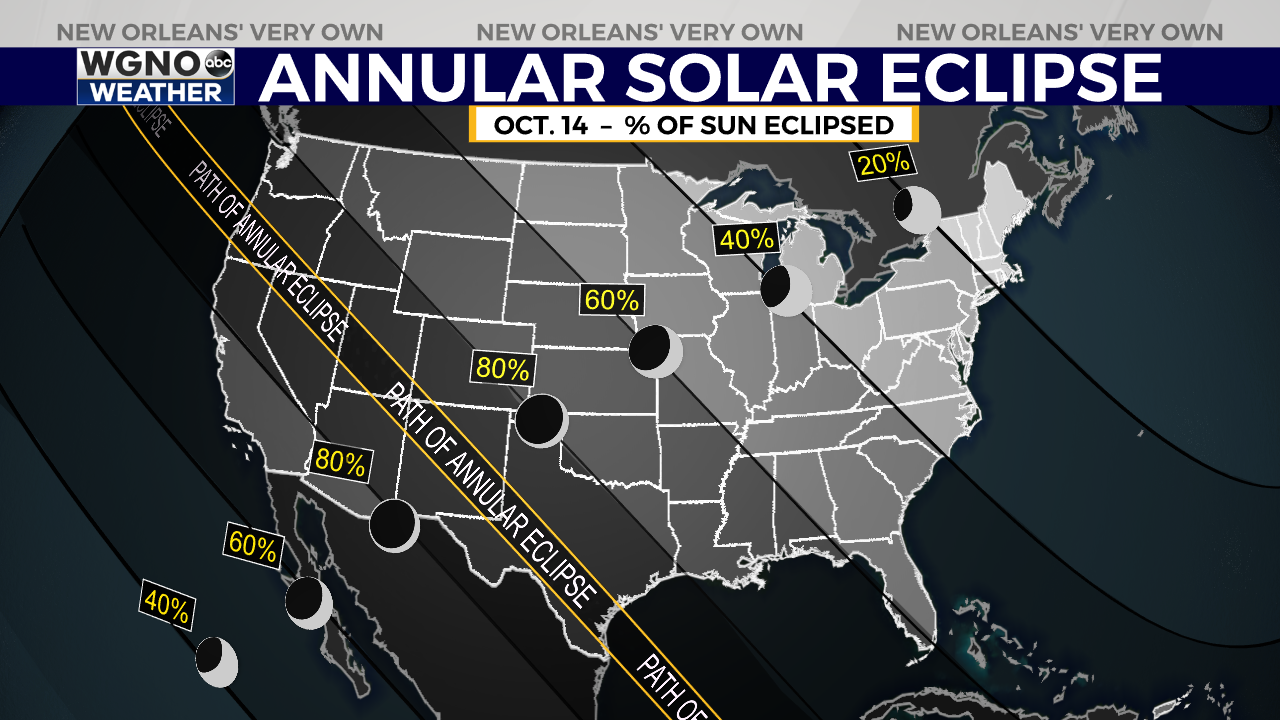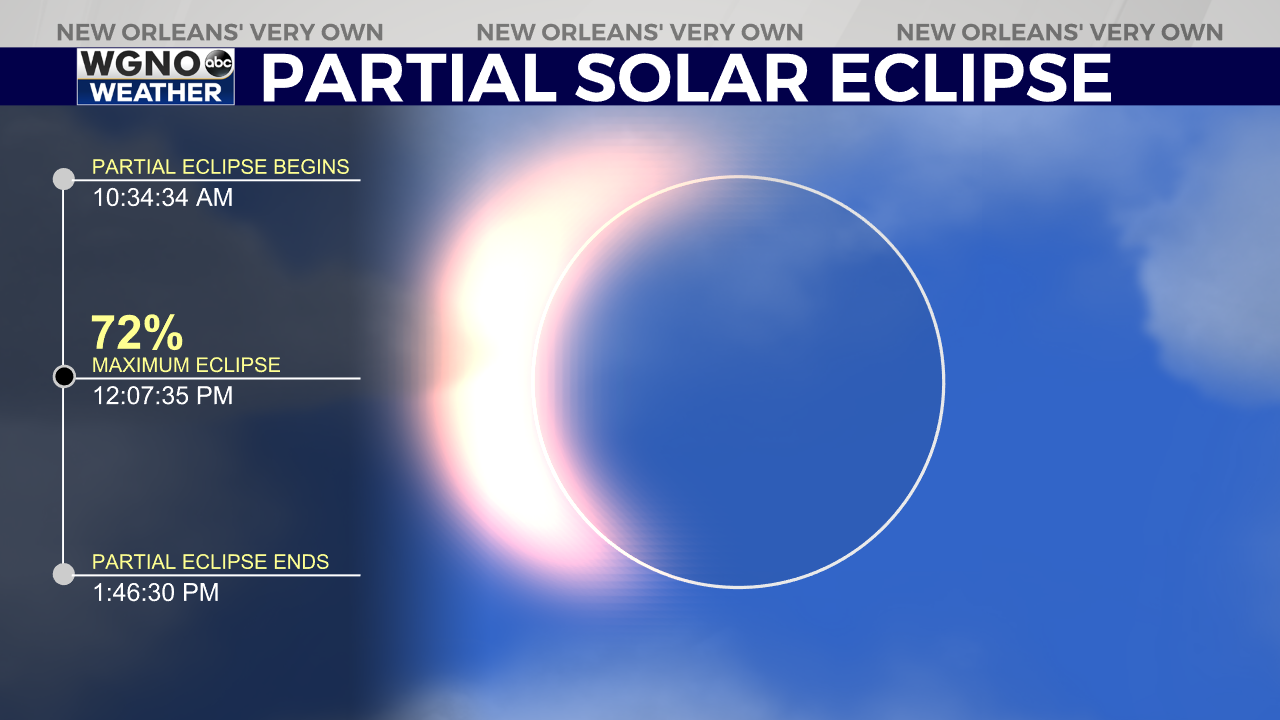NEW ORLEANS (WGNO) — A “Ring of Fire” eclipse will be visible across much of the U.S. this Saturday, Oct. 14.
For those in the direct path of the eclipse, from Oregon to Texas, this is will be an annular solar eclipse. The term “annular” means it is ring-shaped.
Because the moon is farther away than it would be during a total solar eclipse, it doesn’t block out the entire sun. Instead, the sun’s outer edges will create a bright “ring of fire” around the moon during the eclipse.

If you’re not in the eclipse’s direct path, you’ll still have a chance to see a crescent-shaped partial solar eclipse.
Most of the Gulf Coast will see around 60 to 90 percent of the sun blocked by the new moon. For New Orleans, about 72% of the sun will appear eclipsed.

The partial eclipse begins at 10:34 a.m. Saturday and ends at 1:46 p.m. The maximum eclipse can be seen just after noon, at 12:07 p.m.
If you can’t see it from where you are, don’t worry. NASA and others will provide a livestream of the eclipse.
It will be 2039 before another “ring of fire” eclipse is visible in the U.S., and Alaska will be the only state then in the path of totality. The next time another “ring of fire” crosses into the U.S. Lower 48 will be in 2046.
In just a few months, on April 8, 2024, a total solar eclipse will pass over the United States.
The total solar eclipse will start its path in Mexico and then will become visible in Oklahoma, Arkansas, Missouri, Illinois, Kentucky, Indiana, Ohio, Pennsylvania, New York, Vermont, New Hampshire and Maine throughout the day.
Stay up to date with the latest news, weather and sports by downloading the WGNO app on the Apple or Google Play stores and by subscribing to the WGNO newsletter.




